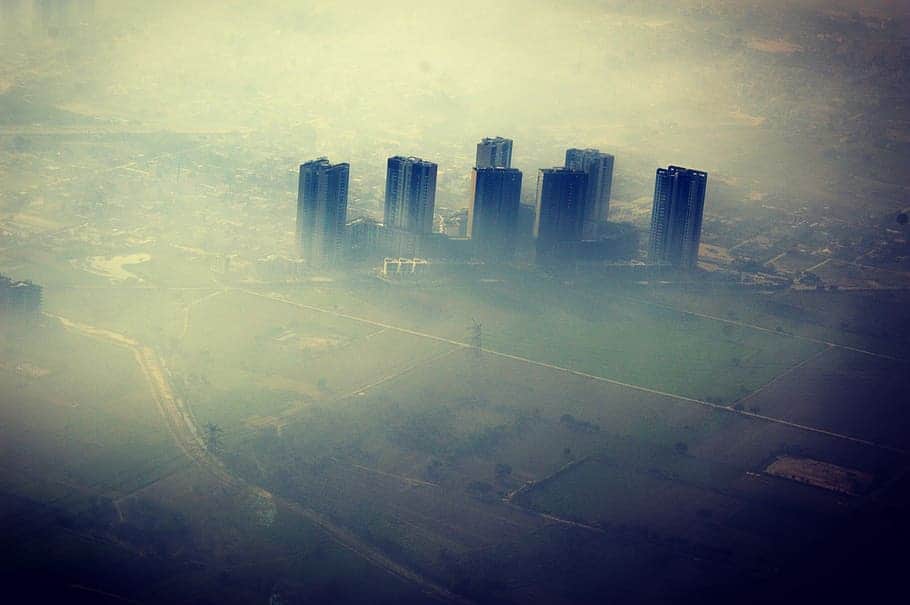As chimney stacks spew
forth our tainted offerings of
industrial excrement,
dilapidated ventilators strain
to suck poison from the
saturated veins of concrete obelisks;
their glass facades opaque
to the inevitability
of our subsidence.
Inside these effigies of excess
numbered commodities
sift spreadsheets like Sisyphus,
smiles met with nodding heads
as monotonous formalities
fall from lolling tongues;
their mute palates indifferent
to the consciousness
of our asphyxiation.
Listless bodies litter the cubicles;
their rasping breaths attuned
to the irony
of our ignorance.

This poem is inspired by recent research, which has found that rising carbon dioxide levels may directly harm our ability to think.
Fossil fuel emissions from human activities are elevating atmospheric carbon dioxide (CO2) to levels that are unprecedented in human history. This increase in CO2 (and other greenhouse gases) is responsible for the effects of global warming that Earth is currently experiencing. This warming can lead to catastrophic events such as sea level rise and an increase in extreme weather events, both of which could thus be considered to be indirect effects of elevated atmospheric CO2 concentrations. However, as well as these indirect effects there are also several direct effects that need to be taken into account, such as ocean acidification, vegetation growth, and the effects of indoor CO2 levels on cognitive function.
When we breathe air with high CO2 levels, the CO2 levels in our blood rise, reducing the amount of oxygen that reaches our brains. In turn, this lack of oxygen can increase sleepiness, heighten anxiety, and ultimately impair our cognitive function. Global outdoor CO2 concentrations currently stand at around 410 parts per million (ppm), i.e. for every one million molecules of air, 410 of them are CO2 molecules. Guidelines indicate that the upper limit for the acceptable conditions of indoor air quality in rooms is 600 ppm. However, indoor pollution levels are often much higher than this; for example, according to the United States’ Environmental Protection Agency, the average concentration of indoor CO2 levels measured in public and commercial office buildings in the United States in the mid–1990s was closer to 1400 ppm. At this level, CO2 concentrations may cut our basic decision-making ability by 25%, and complex strategic thinking by around 50%. Whilst there may be ways to adapt to higher indoor CO2 levels (such as improved ventilation), the best way to prevent cognitive impairment is ultimately to reduce CO2 concentrations by cutting fossil fuel emissions.
Discover more from The Poetry of Science
Subscribe to get the latest posts sent to your email.
Love your poetry and the concepts. I am actually working on a scientific poem myself about dying in Outer Space. I just finished writing a book called “GLESTGAL” which tries to bridge the gap between science and religion in these ever complicated technological times.
I believe we are on the same page here and would love for you to check out one of my posts I have written on my blog about the subject matter that seems to surface in a lot of your poetry. I won’t post any advertising on your blog. But if you’re interested in reading it and maybe seeing if a future collaboration of our ideas is possible, contact me.
Keep on doing what you are doing. Science is so full of poetic beauty. There’s not enough poets writing poems about the subject and yet there is so much to write about.
Thank you for your very gracious post! I would love to hear more about your poem. Please do send it across to me: Sam.illingworth @ gmail . com 😊